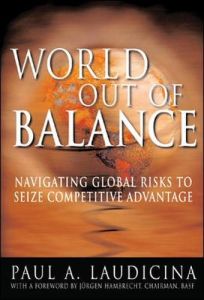Join getAbstract to access the summary!

Join getAbstract to access the summary!
Paul A. Laudicina
World Out of Balance
Navigating Global Risk to Seize Competitive Advantage
McGraw-Hill, 2004
What's inside?
Globalization, shifting demographics, consumerism, limited resources and regulation will shape the future, but how?
Recommendation
Author Paul A. Laudicina invites you to, "Come and look into my crystal ball!" His book, largely based on the research and insights of A.T. Kearney’s prestigious Global Business Policy Council, casts a wide net of future possibilities. After you put it down, you may feel its conclusions could best be summarized with a shrug and a muttered, "Who knows?" To say that five factors - globalization, demographics, consumers’ needs, natural resource limitations, and governmental regulation - will be the primary influences on future world markets is well and good, but what will their impact be? Given the variety of future scenarios here, you may be tempted to resort to John Maynard Keynes’ attitude that, "In the long run, we’re all dead." Be that as it may, Laudicina proves that any astute portrayal of future possibilities must reflect multiple, complex uncertainties. In this rapidly changing world, companies have a profound need to consider what may lie ahead. This volume should provide substantial assistance. getAbstract.com strongly recommends it to corporate leaders, business prognosticators and futurists of every ilk.
Summary
About the Author
Paul A. Laudicina is managing director of A.T. Kearney’s highly regarded Global Business Policy Council, which is the source for many of the insights in the book.


















Comment on this summary